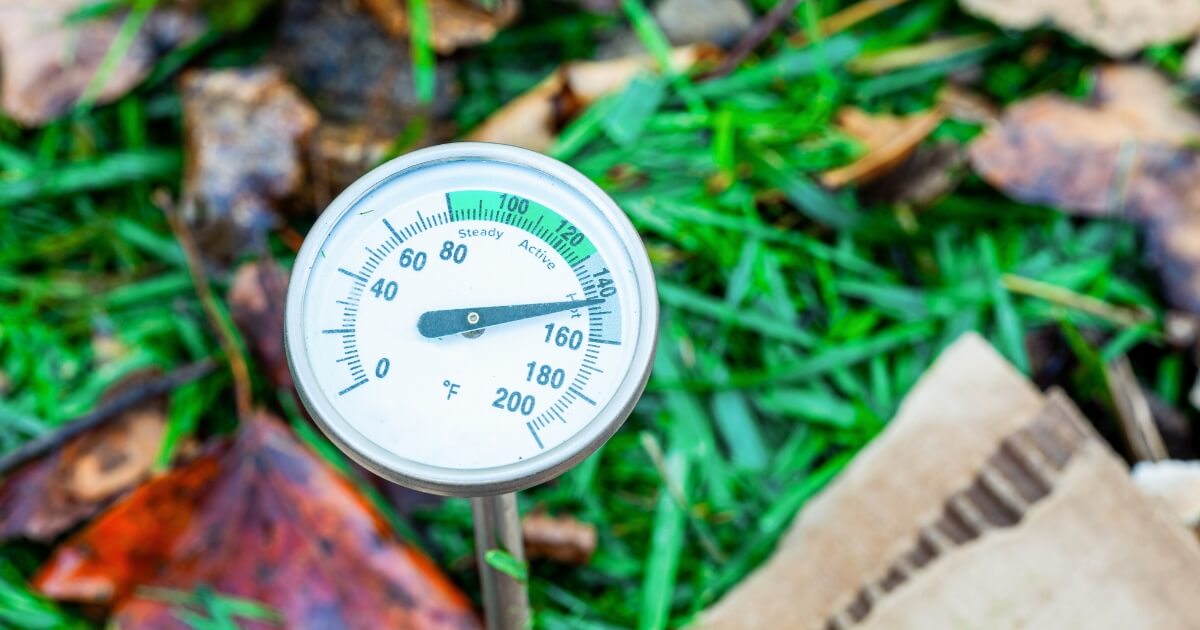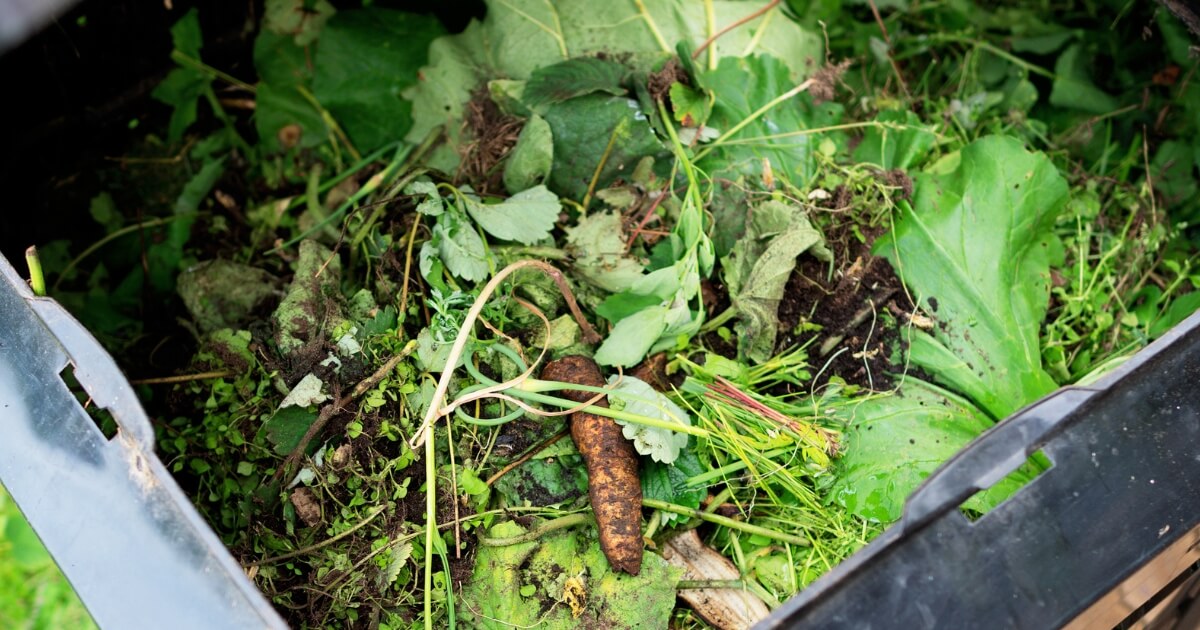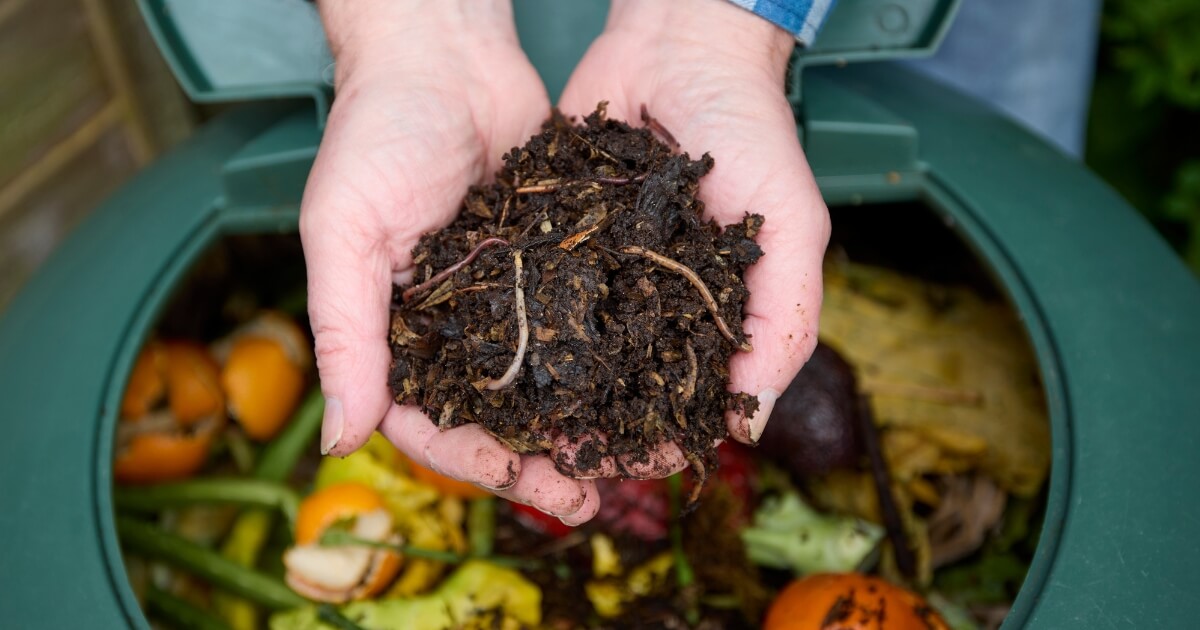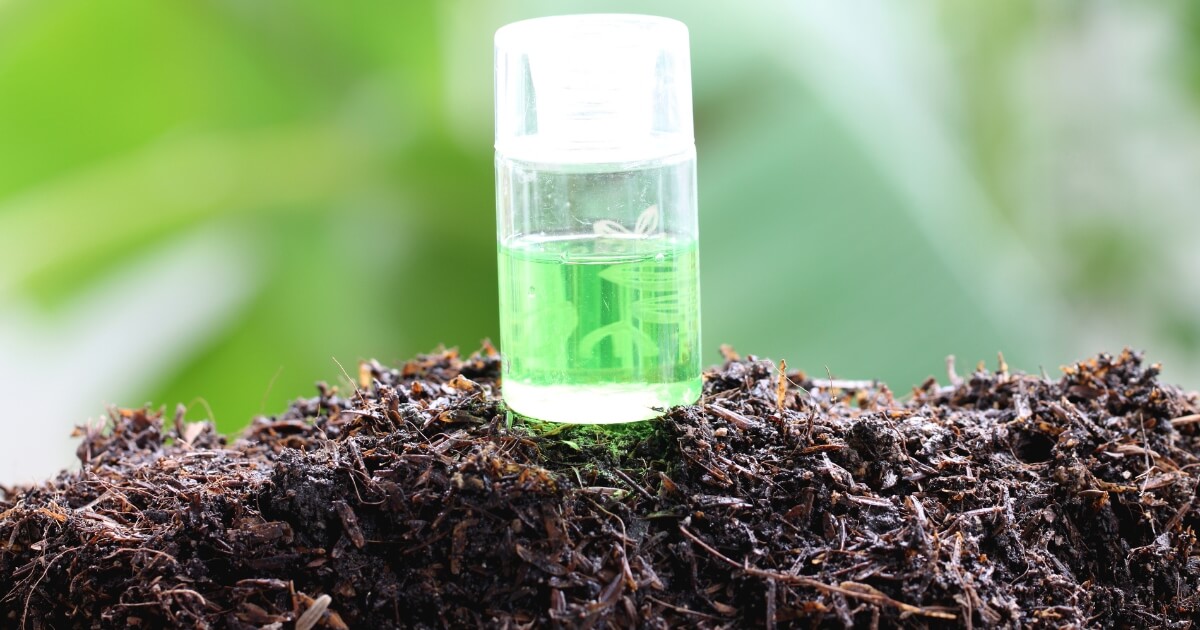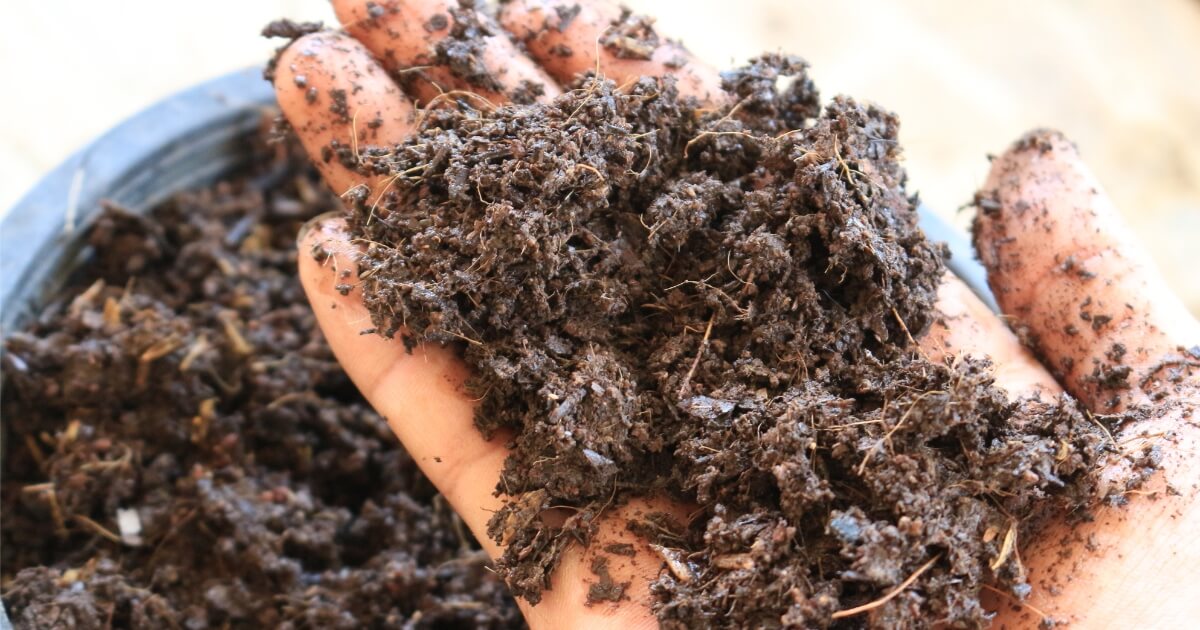Making your own compost at home is a great way to put your kitchen scraps and garden waste to use feeding your lawn and garden without dangerous chemicals.
By composting at home, you’ll have a constant supply of nutrient-rich and powerful fertilizer full of everything your plants need to thrive and produce plentiful fruits and vegetables for your family to enjoy.

Compost isn’t a one size fits all solution. You’ll want to use different amounts of compost based on your landscaping needs to keep all your plants happy and healthy.
If you don’t have enough homemade compost, you may have to purchase a few bags of compost from your local nursery to ensure all your plants get the nutrition they need.
To do this, you’ll need to know exactly how much compost each area of your yard needs.
How Much Compost Is Required
Each part of your lawn will need different amounts of compost, and depending on your project, you may need to apply this compost at a specific depth.
A general rule of thumb to keep in mind is to add between ¼ and ½ inch of compost when topdressing the soil and between 1 and 2 inches if amending the soil.
Specific guidelines to follow for each area of your property:
Garden
When preparing new garden beds or adding compost to annual garden patches, it’s recommended to add the soil in the spring, before planting seeds or seedlings.
Spread 1 to 3 inches of compost on top of the garden area and work it into the soil. A depth of 4 to 8 inches should do!
If you have a larger garden and want to preserve your precious compost, you can add a trowel of compost directly to each planting hole instead.
Setting up a brand new raised bed garden requires a different proportion as well. It is recommended to combine equal parts of garden soil, compost, and sand to create a growing area with enough nutrition as well as proper drainage.
If your garden soil is already sandy, you can simply combine 1 part garden soil with two parts compost for a well-balanced garden bed.
Lawn
Brand new laws can be treated like any new garden bed. Add 1 to 2 inches of soil to the surface and till it into the soil to a depth of 4 to 8 inches before getting started. Afterward, you can sow your grass seeds or sod.
Existing laws only need a topdressing of ¼ to ½ inch of compost to keep them healthy and green. If there are any bare spots or patches on your lawn, add ¼ to ½ inch of compost and gently rake it into the existing soil.
Flower Beds
Perennial flower beds can also greatly benefit from regular compost application too. Simply add 1 inch of compost to the existing bed and cover with 2 inches of mulch.
If you choose to mulch using compost, just add 2 to 4 inches of compost over the soil around your flower bed, extending it at least 12 inches away from your plants.
New flower beds should be prepared the same as a regular garden bed, with 1 to 3 inches of compost tilled to a depth of 4 to 8 inches.
Around Trees & Hedges
When planting new trees and hedges, dig a hole as deep as your plant’s root ball and two to three times as wide.
For every 4 to 6 inches of root ball depth, mix ½ to 1 inch of compost with the excavated soil and blend. Backfill with the soil-compost blend after planting the tree or shrub.
Do not add too much compost to the backfill. Otherwise, the tree or shrub’s roots won’t spread into the surrounding soil in search of water and nutrients and will fail to develop a strong anchor.
Amending the backfill soil with just a small amount of compost will ensure the young plant has enough nutrients to fuel its development without discouraging it from exploring outward with its roots.
You can also mulch existing trees and shrubs with compost. Just add 2 to 4 inches of compost around the tree or shrub. When mulching trees, keep the compost 4 to 6 inches away from the plant’s trunk.
How Much Is A Yard Of Compost?
Compost is sometimes sold by the cubic yard, which is a three-dimensional cube measuring 3 feet long by three feet tall.
How many yards of compost you’ll need for your garden project will depend on the size of the area you need to compost and how deep you’ll be adding compost.
square feet x inches of compost x 0.0031 = # of cubic yards needed
First, measure the length and width of the area you want to cover in feet. Then, calculate the square footage of your project area by multiplying the length by the width.
Finally, multiply the square feet by the inches of compost by 0.0031, and you’ll get the number of cubic yards you’ll need.
How Much Does A Yard Of Compost Weigh?
Although the weight of a cubic yard of compost will vary by moisture content, it usually ranges from 1000 to 1600 pounds. The more it weighs, the more moisture it holds and the less it weighs the drier it will be.
What Does It Cost To Buy A Yard Of Compost?
There are many different factors that can influence how much you’ll pay for a cubic yard of compost, so it’s impossible to give an exact price.
Compost can range from $25 up to around $50 per square foot depending on your location, bulk pricing and, most importantly, the quality of the compost.
Expect to pay a premium for potent compost made from high quality or strictly organic ingredients. Worm castings, for example, can be particularly expensive.
If you’re having your compost delivered to your home, the distance the compost has to travel will be factored into the price as well.
Finally, the more you buy, the less you’ll pay. So if you know you’ll use it, consider buying in larger amounts in order to pay less per yard even if it means spending more upfront.
